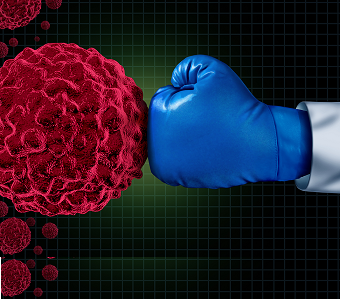Agios Pharmaceuticals (AGIO) soared in trading on Monday after reporting Phase 1 data demonstrating that its cancer metabolism drug AG-221, a first-in-class inhibitor of IDH2 mutations, generated promising clinical activity, including complete remissions in several patients whose blood cancers harbored the IDH2 mutation. Though this clinical data certainly support proof-of-concept, strong science on its own may not justify the giddiness exhibited by Agios investors, who have pushed the company to a nearly-$1.5 billion valuation since its July 2013 IPO.
AG-221 is an oral treatment designed to inhibit the mutated IDH2 protein-coded gene active in cancer cell proliferation. Somatic mutations of this gene appear in a range of solid tumors, such as glioma (brain) and chondrosarcoma (a rare cancer accounting for 20% of bone tumors). The IDH2 mutation has also been observed in about 25% of diagnosed cases of acute myeloid leukemia (AML), a cancer of the blood and bone marrow that predominantly affects adult patients aged 60 or older.
The ongoing Phase 1, dose-escalation study is designed to assess the safety and tolerability of AG-221 as an oral, single agent in advanced AML patients that have the IDH2 mutation. As of March 20, 22 patients had been enrolled in the trial.
Initial phase 1 results on seven evaluable patients presented Sunday at the American Association for Cancer Research (AACR) 2014 meeting (three patients did not complete the full 28-day dosing cycle, having died due to disease-related complications) found five patients who achieved either complete (normalization of blood count) or partial remission.
Though a sample size of seven patients doesn’t make for sound science, what has investors excited is that in addition to being well-tolerated, a “substantial” reduction of plasma 2-HG was achieved.
Called an “oncometabolite” for its role in cancer metabolism, the metabolite 2-hydroxygluturate (2HG) is a by-product of the mutated IDH2 gene. The initial findings support the theory that inhibiting mutant forms of IDH2 suppresses the growth of these 2HG-producing tumor cells.
Investors should remember, however, that the history of oncology research is littered with disappointments from once-promising therapies. Recent detritus include GlaxoSmithKline’s (GSK) high-profile Mage-A3 lung cancer vaccine; Amgen’s (AMGN) ganitumab and Eli Lilly’s (LLY) ramucirumab, monoclonal antibodies being developed for pancreatic cancer and women with metastatic breast cancer, respectively; and Roche’s (RHHBY) investigational MetMab (onartuzumab) for combination use with Tarceva (erlotinib) in advanced non-small cell lung cancer.
Investors are making the quantum leap – based on a small safety/dosing trial – that curtailing 2-HG supply will normalize gene expression, thus reversing malignancy and leading to a complete or partial remission. Though initial data does suggest that serum measurement of this oncometabolite could provide useful diagnostic information (helping to improve patient selection for IDH-targeted therapies), there is a paucity of hard data to conclude that the majority of patients in complete or partial remission after treatment with AG-221 will not ultimately relapse. To date, AG-221 offers no guarantee of long-term remission – or a substantial survival benefit over existing therapies.
Notwithstanding the fact that the opportunity for an IDH2m-targeted therapy is around 11,000 patients (U.S., EU27, Japan) according to the company, and Agios would receive nominal royalty income having signed over global rights to the drug to Celgene (CELG), those buying on this week’s news release might consider what kind of “success” a billion-dollar valuation already bakes in. Of note, the pre-phase 1 IDH1m inhibitor, AG-120, has investor interest piqued given a larger population of patients with the mutation.




